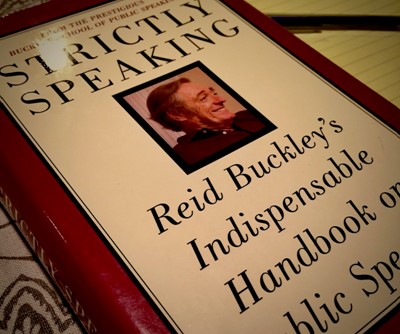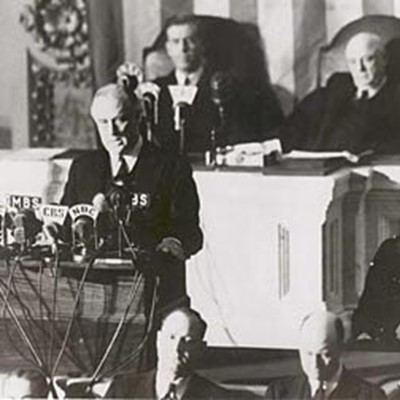
"Fear keeps steady company with the performing arts," writes Buckley School founder Reid Buckley in his book "Strictly Speaking." We’re publishing a series of excerpts from that book on how to manage public speaking nerves, stage fright, and presentation panic.
"Without fear imminent in your entrails, you are worth nothing on stage. Fear absent, you flop."
– Reid Buckley
Don’t Permit Fear to Topple You
Tighten your organization.
The logical assemblage of an essay or a talk is ideally so natural and so inherently integrated that one leads to two leads to three in a progression that to disrupt must defy the interior logic of the brain.
When one's organization is singing in the mind, it's difficult to go off track. Achieving such organization requires a lot of tough preliminary work. Not only must the sequence of topics be sorted out in their natural order (chronology is the simplest, though not always the correct or most advisable determinant), the syntax of the sentence must also reflect that order.
Just as Topic A impels Topic B, so the sentences expounding the topic should clearly and harmoniously spill into one another, creating a seamless texture.
 "When one's thinking, and when one's reflection of that thinking in language, approach beauty...then fear on one major level is defied," writes Reid on how organization helps control stage fright.
"When one's thinking, and when one's reflection of that thinking in language, approach beauty...then fear on one major level is defied," writes Reid on how organization helps control stage fright.
The human brain is bombarded every second by millions of messages about reality that it receives through the senses. The brain is engaged in a continuous editing and ordering of these messages, with the design of reducing their vast number to a comprehensible prototype. Is that truly a savage about to strike you with a club or is what causes you to cringe the shadow of a loose shutter being banged about by the wind?
When one's thinking, and when one's reflection of that thinking in language, approach beauty—because they so please the organizational bias of the human brain—then fear on one major level is defied.
You are not going to mess up the presentation of your topic by expounding first things last and last things first, the natural authority of your design preventing it.






